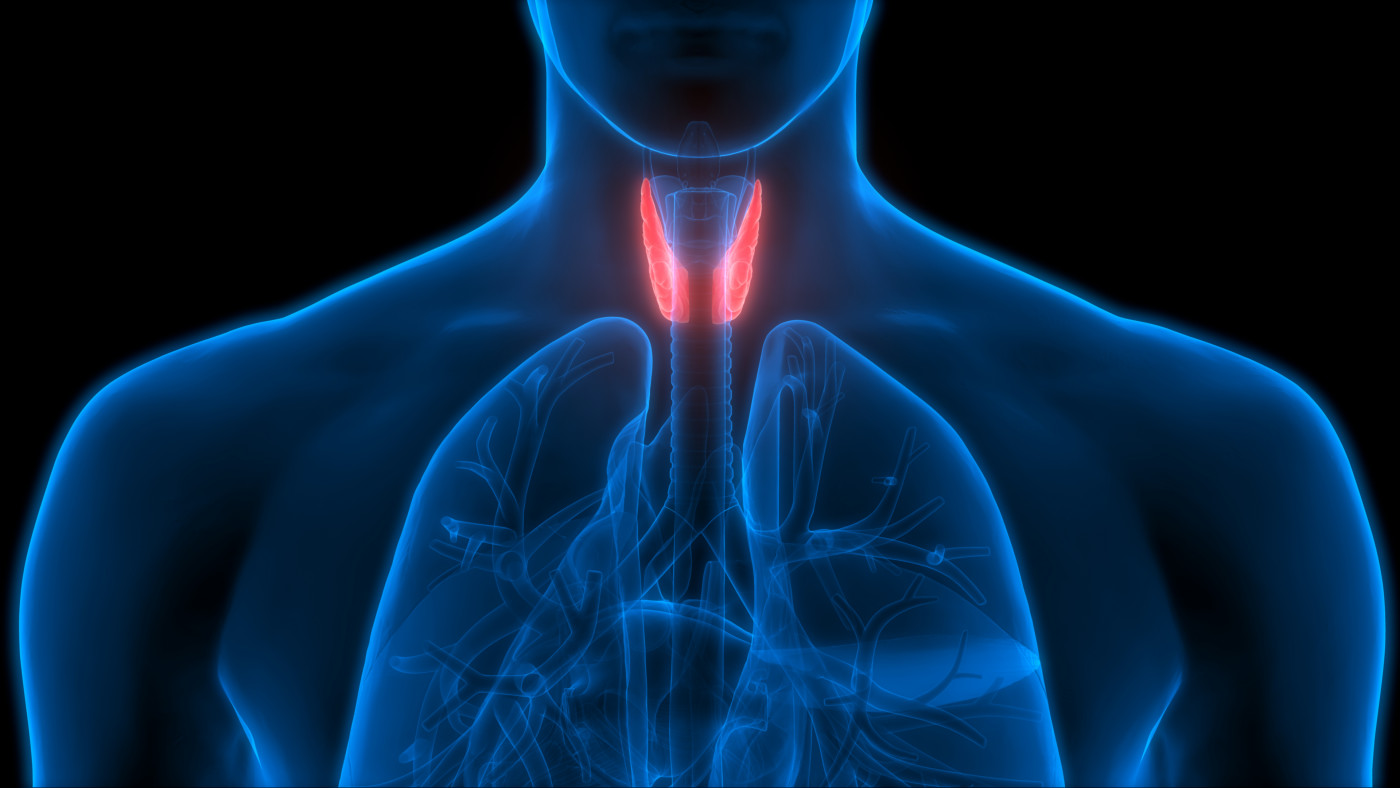Study: Lower Quality of Life, Worse Symptoms in Thyroid Cancer Survivors With Hypoparathyroidism

People with thyroid cancer who develop hypoparathyroidism after surgery have reduced quality of life and worse symptoms than those without hypoparathyroidism, a study reports.
The study, “Quality of life in patients with hypoparathyroidism after treatment for thyroid cancer” was published in The Journal of Clinical Endocrinology & Metabolism.
Total thyroidectomy — complete removal of the thyroid gland — often is the treatment of choice when a person is diagnosed with thyroid cancer. Yet, the procedure may lead to hypoparathyroidism (low levels of the parathyroid hormone) typically treated with calcium and vitamin D supplementation.
While prior studies have documented a low quality of life among people diagnosed with thyroid cancer, whether impairments due to hypoparathyroidism further affect quality of life has seldom been investigated.
To address this knowledge gap, an international group of researchers assessed quality of life in thyroid cancer patients using the European Organisation for Research and Treatment of Cancer (EORTC) Quality of Life Core Questionnaire (QLQ-C30).
The QLQ-C30 tool evaluates functional behavior across five domains — physical, role, emotional, cognitive and social functioning — and global quality of life. It also assesses nine other factors: fatigue, nausea and vomiting, pain, shortness of breath, insomnia, appetite loss, constipation, diarrhea, and financial difficulties.
Patients were asked to answer each question as “not at all,” “a bit,” “quite a bit,” and “very much.” Their responses then were converted to scores ranging from zero to 100, where higher values correspond to better functioning but worse symptoms.
The questionnaire also included questions related to hypoparathyroidism, following the same scoring.
In total, the study included 91 patients enrolled in an international study that assessed a quality of life tool specific for thyroid cancer. Patients were included if they had been diagnosed with thyroid cancer nine months or more before study start.
Seventeen participants (19%) were diagnosed with hypoparathyroidism, 72 (79%) had normal parathyroid glands function, and two patients (2%) had unknown hypoparathyroidism status. Patients were included in the hypoparathyroidism group if they had been diagnosed nine months or longer, and had parathyroid insufficiency at the time of their interview for the study.
No significant differences were seen for age (mean 54.5 years vs. 52.4 years), sex (74% vs. 82% women), and other characteristics between patients with or without hypoparathyroidism.
At the time of the interview, no patient was undergoing radiotherapy, yet four patients with hypoparathyroidism (24%) and six (8%) in the non-hypoparathyroidism group had been treated with radiotherapy in the past six months.
In the group without hypoparathyroidism, two patients (3%) were undergoing chemotherapy and six (8%) were given tyrosine kinase inhibitors (TKIs). Three participants in the hypoparathyroidism group (18%) also received TKIs.
The hypoparathyroidism group had significantly lower (meaning worse) scores in five items of the QLQ-C30 compared to the group without this condition, including: global health (51 vs. 68.5); physical functioning (66.7 vs. 82.7); role functioning (66.7 vs. 82.7); emotional functioning (56.9 vs. 80.0); and social functioning (69.6 vs 86). No significant differences were found for cognitive functioning.
Also, patients with hypoparathyroidism scored worse (in this case, higher) for symptoms compared to those in the non-hypoparathyroidism group, namely for: fatigue (45.8 vs. 28.7); pain (41.2 vs. 17.6); shortness of breath (31.4 vs 15.3); and insomnia (41.2 vs 23.1).
Compared to the non-hypoparathyroidism group, patients with hypoparathyroidism were less likely to report better quality of life (higher scores), including for global health, and physical, role, emotional and social function.
More patients in the hypoparathyroidism group reported tingling or numbness in fingers or toes (65% vs. 32%) and restlessness or agitation (77% vs. 46%).
Yet, both hypoparathyroidism and non-hypoparathyroidism groups reported high percentages regarding joint pain (82% vs. 54%), attacks of tiredness (77% vs. 51%), and muscle cramps (59% vs. 38%).
Overall, “the assessment of HPT [hypoparathyroidism] in studies measuring the QOL [quality of life] in thyroid cancer patients should be considered since our analysis has shown that HPT might severely influence the QOL of thyroid cancer survivors,” the researchers wrote.






